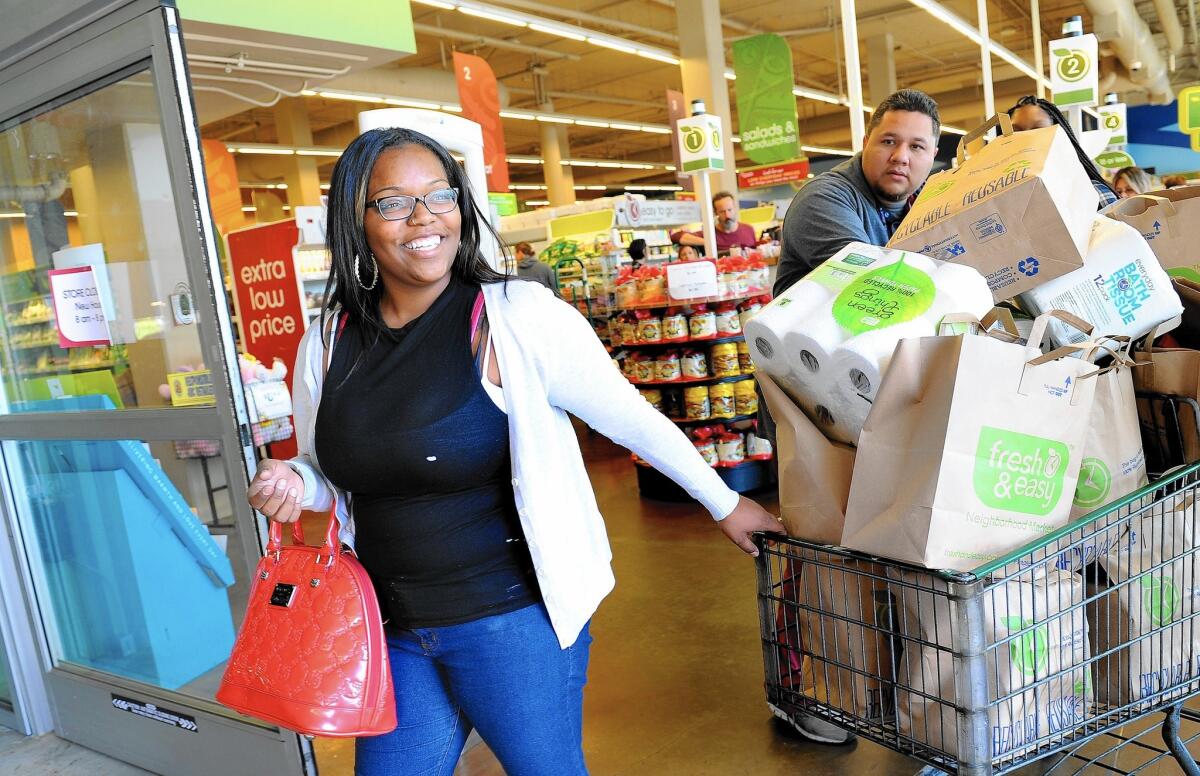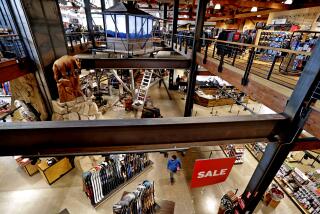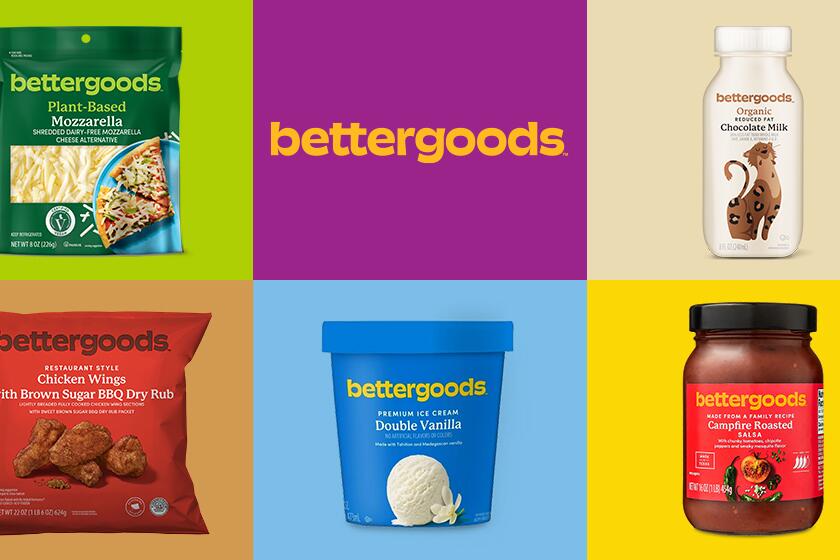Fresh & Easy to close 30 Southland stores as it explores new formats

The struggling Fresh & Easy chain is remaking itself to better compete in an increasingly crowded grocery landscape, closing 30 Southern California markets as it develops plans to roll out new store formats.
Fresh & Easy will try to sell the stores, some in areas with few other shopping options, and will use the proceeds to finance new development, including a small convenience store emphasizing fresh food, spokesman Brendan Wonnacott said.
Fresh & Easy is working with Apple store designer ADMI on several concepts including the convenience stores, which are envisioned as 3,000 to 5,000 square feet, compared with Fresh & Easy’s average of 10,000 square feet.
This month, Fresh & Easy launched an e-commerce service in Las Vegas that allows customers to buy groceries online and have the food waiting curbside at the store. The company said it’s testing the idea for a wider rollout.
The announcement comes as the Southland grocery scene undergoes a transformation that analysts said presents a challenge to Fresh & Easy’s turnaround plans.
Supermarket chains, including giants Ralphs and Albertsons, are facing competition from mega-discounters such as Walmart and Costco as well as delivery services including AmazonFresh. Haggen Inc., a Pacific Northwest chain, is opening 83 California stores in former Vons, Pavilions, Albertsons and Safeway locations.
“There are a lot of new options,” said Steve Stallman, president of food industry consulting firm Stallman Marketing.
With the changes that Fresh & Easy is exploring, the company is seeking to become more fresh and more easy — an idea that analysts said held promise but was bungled by the firm’s former British owner Tesco, costing about $2 billion in losses over five years.
Since grocery billionaire Ron Burkle’s Yucaipa Cos. bought the unprofitable chain in 2013, Fresh & Easy has introduced about 7,000 new products and fresher food, Wonnacott said. The private company doesn’t release financial results.
Fresh & Easy said it was selling stores that don’t meet its “model of modern convenience.” The El Segundo company is working on making its bigger locations more convenient, Wonnacott said.
Wild Oats, which was the name of a chain of natural foods stores acquired by Whole Foods Market in 2007, is also involved. Yucaipa, which held an 18% stake in Wild Oats, owns the brand name. Since the Yucaipa purchase, Fresh & Easy has introduced Wild Oats products such as salads and eggs.
The firm recently rebranded a Fresh & Easy store in Scottsdale, Ariz., as Wild Oats and introduced more natural and organic foods, Wonnacott said. The company hopes to remake more locations as Wild Oats but is not planning to do so at all remaining stores, he said.
In all, about 50 stores in California, Nevada and Arizona will be sold and are scheduled to close by April 3, Wonnacott said. That represents 30% of the company’s 167 stores.
The company will try to find new jobs inside Fresh & Easy for some of the roughly 650 employees at the stores, but there will be layoffs, Wonnacott said.
Among the locations closing are one in Compton and another in South Los Angeles, working-class areas with limited options for fresh produce.
Employee Juanita Jackson, 48, said she was upset that Fresh & Easy was closing the Compton store, where she had worked since it opened. She said she hadn’t heard about any employment help from Fresh & Easy.
“I opened with the company, and now I’m closing with the company,” Jackson said.
Lauretta Jackson, 60, was shopping at the Fresh & Easy in Compton when she found out the store was closing. She started to worry about where she would buy groceries, echoing other customers who complained they would have a harder time finding fresh produce nearby.
“I’ll have to go way across town to shop,” the Compton resident said. “That takes me seven to eight miles away. We have all this fast food around here.”
Marcela Medina, 29, said she’ll miss her neighborhood Fresh & Easy, which is on East Adams Boulevard south of the 10 Freeway, because it’s hard to find organic items in local shops. She was snapping up organic products Monday morning that were on sale for 50% off because of the store’s closing.
“This is the first store locally that I can get organic produce,” she said. “I do work in Pasadena, so I guess I’ll have to go over there, and I’ll be looking out for farmers markets.”
Since its 2007 debut, Fresh & Easy struggled to establish itself. The chain was British supermarket giant Tesco’s first venture into the U.S. It billed the new company as a European version of the Trader Joe’s chain, offering an assortment of groceries with an emphasis on fresh products, including ready-made meals to go.
But the company made a mistake when it tried to transplant a British retail format with private-label products and little service, analysts said. Labor organizers targeted the non-union, self-checkout stores, and shoppers often crossed informational picket lines.
Tesco also didn’t carry some well-known brands and was slow to restock popular items, analysts said.
“Fresh & Easy had both the high-quality, ready-prepared means and off-name brands that no one ever heard of before,” Stallman said. “It was very confusing.”
Jim Hertel, managing partner at food retail consulting firm Willard Bishop, said produce was also wrapped in cellophane — a display that American consumers associated with food that isn’t fresh.
In 2013, Fresh & Easy filed for Chapter 11 bankruptcy protection. The grocery chain was then sold to Burkle’s Yucaipa.
Wonnacott declined to say whether buyers have been secured for the closing stores. Once the 30 Southland stores close, the company will have 58 left in the region, he said.
Hertel said Fresh & Easy faces a challenge in a competitive healthful food marketplace, while also introducing a smaller convenience store concept. But he said it appears the store “is now going to live up to its name.”








